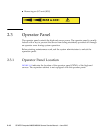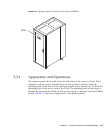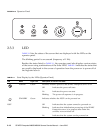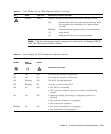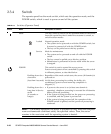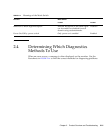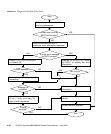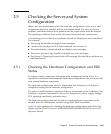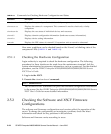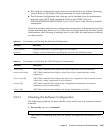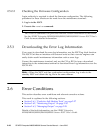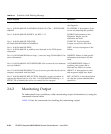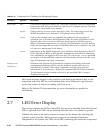
Chapter 2 Product Overview and Troubleshooting 2-23
2.5 Checking the Server and System
Configuration
Before and after maintenance work, the state and configuration of the server and
components should be checked and the information saved. For recovery from a
problem, conditions related to the problem and the repair status must be checked.
The operating conditions must remain the same before and after maintenance.
A functioning server without any problems should not display any error conditions.
For example:
■ The syslog file should not display error messages.
■ * mark is not displayed in SCF shell command showhandconf
■ The administrative console should not display error messages.
■ The server processor logs should not display any error messages.
■ The Solaris™ Operating System (Solaris OS) message files should not indicate any
additional errors.
2.5.1 Checking the Hardware Configuration and FRU
Status
To replace a faulty component and perform the maintenance on the server it is
important to check and understand the hardware configuration of the server and the
state of each hardware component.
The hardware configuration refers to information that indicates to what layer a
component belongs in the hardware configuration.
The status of each hardware component refers to information on the condition of the
standard or optional component in the server: temperature, power supply voltage,
CPU operating conditions, and other times.
The hardware configuration and the status of each hardware component can be
checked from the maintenance terminal using XSCF Shell commands.
TABLE 2-5 lists commands for checking the hardware configuration and status. For
details, see the SPARC Enterprise M3000/M4000/M5000/M8000/M9000 Servers XSCF
Reference Manual.




